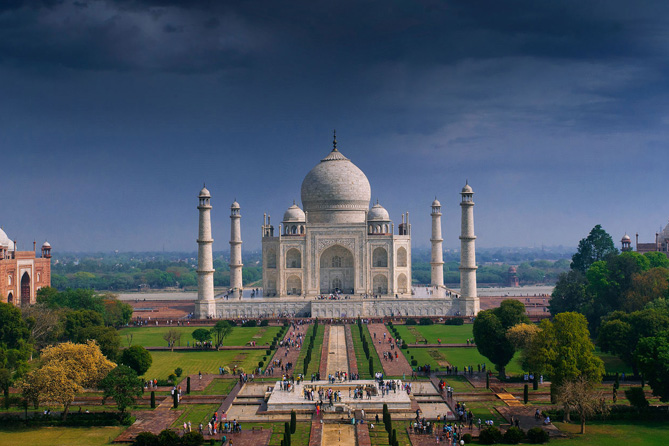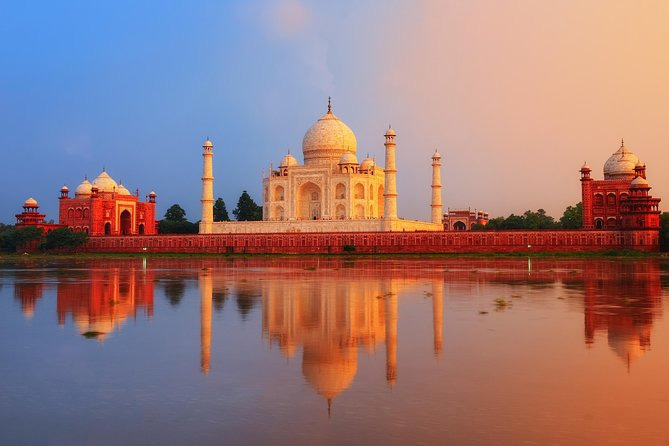Tajmahal
Tajmahal





Taj Mahal, rated as One of the New 7 Wonders of the World and one amongst UNESCO World Heritage sites, is an ivory-white mausoleum located on the banks of the river Yamuna. It was built by Mughal Emperor Shah Jahan to house the tomb of his wife Mumtaz Mahal. It was commissioned in 1632 and the main construction was completed by 1643, with additional work being completed in 1653.
Taj Mahal is an elegant architectural masterpiece set in a 42-acre garden complex. The main mausoleum is one of the best examples of Mughal and Indo-Islamic architecture. It is built of white marble inlaid with semi-precious stones. Its exterior decoration consists of paint, stucco, inlay work, and carvings as calligraphy, abstract forms, or floral motifs. The garden has been laid in the pattern of square Charbagh or Mughal gardens, with a reflecting pool, fountains, and avenues of trees.
The Taj Mahal Complex is bordered on three sides by crenellated sandstone walls, and has three principal entrances – East Gate, West Gate, and South Gate. The access roads to the Taj Mahal Complex have been renovated recently.
The Taj Mahal is a timeless treasure of symmetry and blends stateliness with delicacy. It has been praised by poets and artists. It was called “a teardrop on the cheek of time”, by poet and Nobel Laureate Rabindranath Tagore, “an emperor’s love wrought in stone” by English poet Sir Edwin Arnold, and “a perfect pearl on an azure ground” by painter Hodges. It continues to attract millions of visitors every year. It looks equally stunning by moonlight, and is open to visitors few nights every month.
